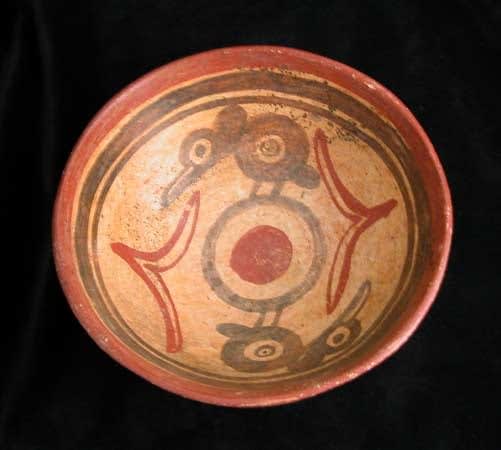Mayan Painted Terracotta Bowl, 500 CE - 900 CE
Terracotta
7.5 x 2.75
PF.5848
Further images
The immediate simplicity of this bowl is striking. Both the potted form and the decoration are sparse and unelaborated. The basic concave arch of the bowl is pottery at its...
The immediate simplicity of this bowl is striking. Both the potted form and the decoration are sparse and unelaborated. The basic concave arch of the bowl is pottery at its purest. The smoothness and flow of the bowl is even more impressive considering that all Mayan ceramics were created without the aid of a potter’s wheel. The artist chose to embellish this vessel with decorative motif that is evocative and yet abstract. Every line and curve is essential to the pattern; nothing is redundant or superfluous. The interior rim has been highlighted by a series of red and black rings. Inside, two black birds masterfully painted appear to be standing by “V” shaped objects evocative of a bird in flight and perhaps representing leaves of a plant or the pedals of a flower. Meanwhile, the exterior has been divided into two rows. The upper row is a frieze repeating a glyph symbolic of the hook-nosed serpent deity painted in red and orange. Below, there is an abstracted frieze of circles and squares in black. While the iconography of this bowl appears confusing and irrational to our eyes, clearly to the Mayans there was a greater symbolic interrelation between the motifs that they could easily appreciate. There is a definite power to this vessel that has slowly accumulated over the ages. Found in a tomb, buried along side a fallen ruler or dignitary, this vessel was as important in the afterlife as it was in this world.







